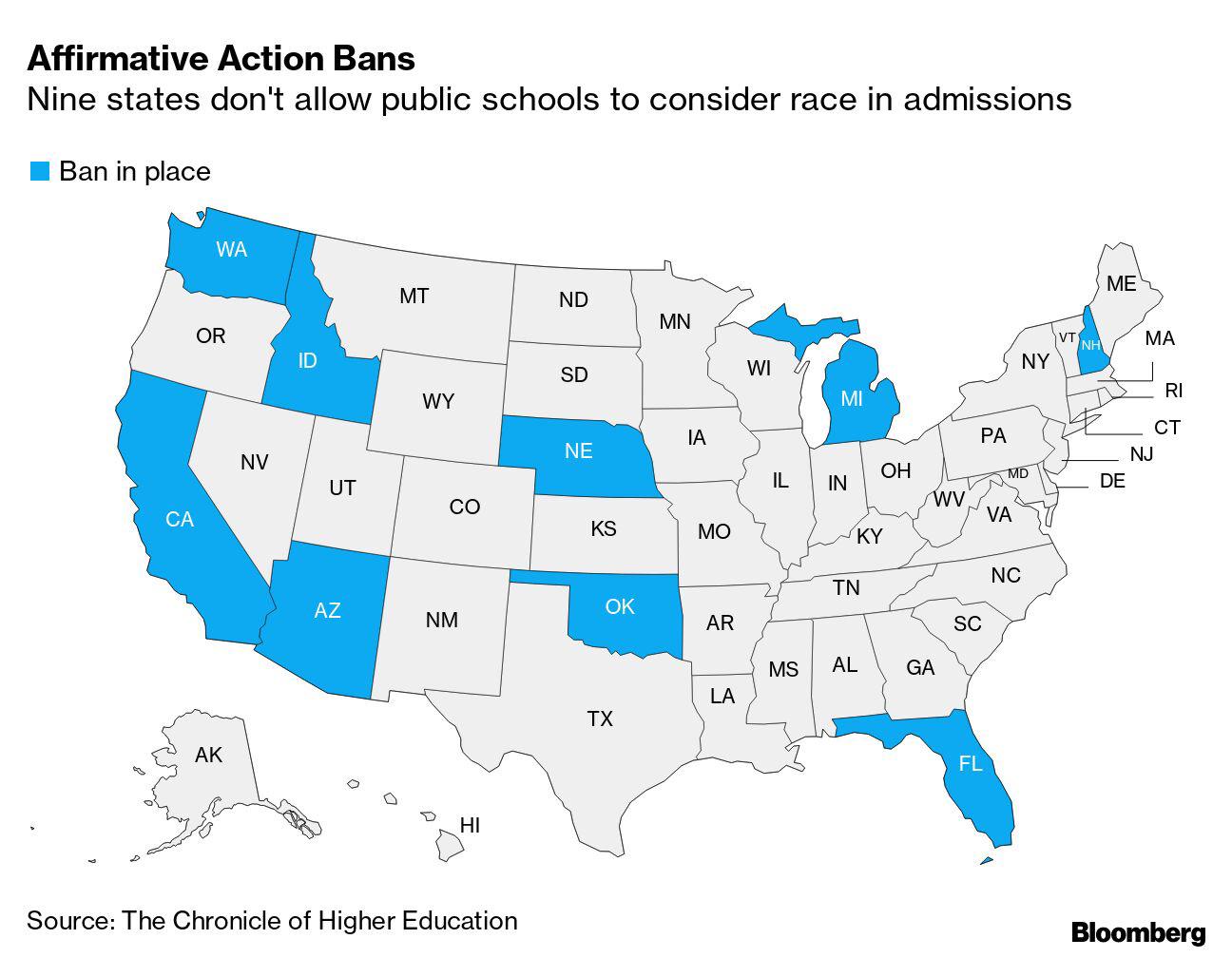Map of States with Affirmative Action Bans


David Chen
Data Visualization Specialist
David Chen is an expert in transforming complex geographic datasets into compelling visual narratives. He combines his background in computer science ...
Geographic Analysis
What This Map Shows
This map visually represents states in the United States that have enacted affirmative action bans, indicating where public institutions cannot use race, sex, or religion as factors in public employment and education. Affirmative action policies have been a significant component of the conversation around equity and access in education and job opportunities. The visualization highlights the states where these bans were passed, often through ballot initiatives, reflecting a shift in public sentiment and policy regarding diversity and inclusion.
Deep Dive into Affirmative Action Bans
Affirmative action refers to policies that actively seek to improve opportunities for historically marginalized groups, particularly in education and employment. The bans depicted in this map represent a considerable change in how states approach these issues, often arising from societal debates surrounding race and equality.
Interestingly, the affirmative action bans in the states highlighted on the map were primarily introduced through popular ballot initiatives. For instance, California led the way in 1996 with Proposition 209, a landmark initiative that prohibited state institutions from considering race, sex, or ethnicity in public employment, education, and contracting. This initiative sparked significant debate and set a precedent that other states would follow.
By 1998, Washington joined the ranks with Initiative 200, also aiming to eliminate affirmative action in public sectors. These early adopters have seen a ripple effect, influencing states like Michigan, which passed Proposal 2 in 2006, Nebraska with the passage of Amendment 1 in 2008, Arizona through Proposition 107 in 2010, and Oklahoma with State Question 759 in 2012. Each of these initiatives reflects a growing movement against affirmative action policies, suggesting a shift towards a more meritocratic view of education and employment.
The implications of these bans are profound. States that have enacted these measures often witness significant changes in their educational and employment landscapes. For instance, there is evidence indicating that minority enrollment in public universities has declined in states with affirmative action bans. What's particularly intriguing is the pushback from various organizations and advocates who argue that these changes perpetuate systemic inequities rather than alleviate them.
Moreover, the conversation surrounding these bans is intertwined with broader social issues, including racial justice, economic inequality, and political ideologies. As society grapples with these complex issues, the impact of affirmative action bans continues to be a crucial point of discussion.
Regional Analysis
When examining the map more closely, we can identify patterns and trends that highlight regional differences in attitudes toward affirmative action. For example, the West Coast, with California and Washington, has historically leaned towards progressive policies, yet these states have taken steps to limit affirmative action, which may seem contradictory.
In contrast, the Midwest state of Michigan, known for its diverse population and industrial workforce, has seen significant debates around the role of affirmative action in promoting equal opportunities. The ban enacted in Michigan reflects a unique tension between the state’s demographic diversity and the push for equality through non-discriminatory practices.
Meanwhile, states like Arizona and Oklahoma reveal a different narrative. These states, often perceived as more conservative, have adopted affirmative action bans that resonate with broader political ideologies emphasizing individual merit over group identity. This raises questions about regional identities and how they influence policy decisions.
Significance and Impact
The significance of affirmative action bans cannot be understated. They represent a critical juncture in the ongoing struggle for equality in the United States. As the political landscape continues to evolve, understanding the implications of these bans is essential for policymakers, educators, and advocates alike.
Current trends indicate a growing polarization around this issue. While some states are moving to repeal or challenge these bans, others remain steadfast in their commitment to limiting affirmative action. The future of these policies will likely continue to be shaped by public sentiment, legal challenges, and the evolving demographics of the United States.
Ultimately, the map of states with affirmative action bans serves as a powerful reminder of the ongoing debate surrounding equality, access, and the role of government in addressing historical injustices. As we look ahead, it’s crucial to remain engaged in these discussions, considering not just the legal frameworks but also the human impact behind these policies.
Visualization Details
- Published
- September 29, 2025
- Views
- 64
Comments
Loading comments...